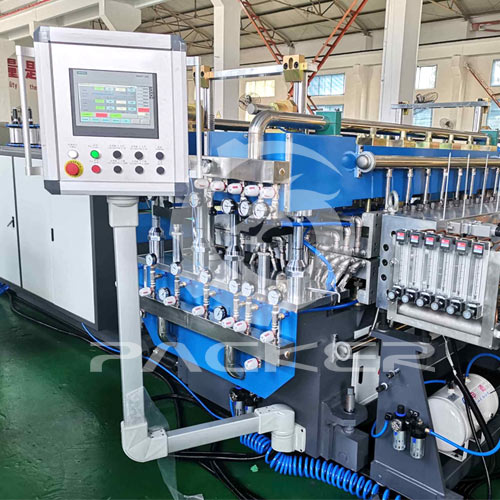 English
English Español
Español  Português
Português  русский
русский  Français
Français  日本語
日本語  Deutsch
Deutsch  tiếng Việt
tiếng Việt  Italiano
Italiano  Nederlands
Nederlands  ภาษาไทย
ภาษาไทย  Polski
Polski  한국어
한국어  Svenska
Svenska  magyar
magyar  Malay
Malay  বাংলা ভাষার
বাংলা ভাষার  Dansk
Dansk  Suomi
Suomi  हिन्दी
हिन्दी  Pilipino
Pilipino  Türkçe
Türkçe  Gaeilge
Gaeilge  العربية
العربية  Indonesia
Indonesia  Norsk
Norsk  تمل
تمل  český
český  ελληνικά
ελληνικά  український
український  Javanese
Javanese  فارسی
فارسی  தமிழ்
தமிழ்  తెలుగు
తెలుగు  नेपाली
नेपाली  Burmese
Burmese  български
български  ລາວ
ລາວ  Latine
Latine  Қазақша
Қазақша  Euskal
Euskal  Azərbaycan
Azərbaycan  Slovenský jazyk
Slovenský jazyk  Македонски
Македонски  Lietuvos
Lietuvos  Eesti Keel
Eesti Keel  Română
Română  Slovenski
Slovenski  मराठी
मराठी  Srpski језик
Srpski језик
Classification of plastic profile extrusion lines
2021-08-02
The plastic profile extrusion line is mainly used for the production of plastic door and window profiles, plastic decorative panels, PVC foam profiles and other plastic products.
According to the molding state of the co-extrusion material, the process of the plastic profile extrusion production line can be divided into two types: pre-co-extrusion and post-co-extrusion. The former co-extrusion means that two materials are compounded in the process of not being completely formed; the post-co-extrusion means that one material is completely formed, and then it is compounded with another material. The advantage of post-coextrusion is that it can use waste materials and is economical.
Plastic profile extrusion line processes can be divided into organic co-extrusion and inorganic co-extrusion according to different extrusion materials. Organic co-extrusion includes pre-co-extrusion of the same material (such as fine materials and mixed with recycled materials), pre-co-extrusion of different materials (such as PMMA and PVC pre-co-extrusion) and post-co-extrusion of soft and hard PVC; inorganic co-extrusion It can be divided into aluminum-plastic composite co-extrusion and steel-plastic composite co-extrusion.
This article focuses on post co-extrusion, aluminum-plastic composite profile co-extrusion, steel-plastic composite profile co-extrusion and two-color co-extrusion technology.
Compared with the traditional pre-coextrusion (FCE) technology, the post-coextrusion plastic profile extrusion process has the obvious characteristics of simple process, flexible application, low rejection rate, easy recycling, and controllable bonding strength. At present, this technology is mainly used to manufacture profiled materials for doors and windows with sealing strips.
Plastic profile extrusion line processes can be divided into organic co-extrusion and inorganic co-extrusion according to different extrusion materials. Organic co-extrusion includes pre-co-extrusion of the same material (such as fine materials and mixed with recycled materials), pre-co-extrusion of different materials (such as PMMA and PVC pre-co-extrusion) and post-co-extrusion of soft and hard PVC; inorganic co-extrusion It can be divided into aluminum-plastic composite co-extrusion and steel-plastic composite co-extrusion.
This article focuses on post co-extrusion, aluminum-plastic composite profile co-extrusion, steel-plastic composite profile co-extrusion and two-color co-extrusion technology.
Compared with the traditional pre-coextrusion (FCE) technology, the post-coextrusion plastic profile extrusion process has the obvious characteristics of simple process, flexible application, low rejection rate, easy recycling, and controllable bonding strength. At present, this technology is mainly used to manufacture profiled materials for doors and windows with sealing strips.
The traditional pre-coextrusion plastic profile extrusion technology is a one-time molding technology. Two or more extruders extrude molten materials with different rheological behaviors or different colors into the same molding die. These melts flow in their respective runners in the molding die, and then merge and extrude at the die. Vacuum in the shaping sleeve, cooling and shaping.

Previous:Classification of plastic crushers



